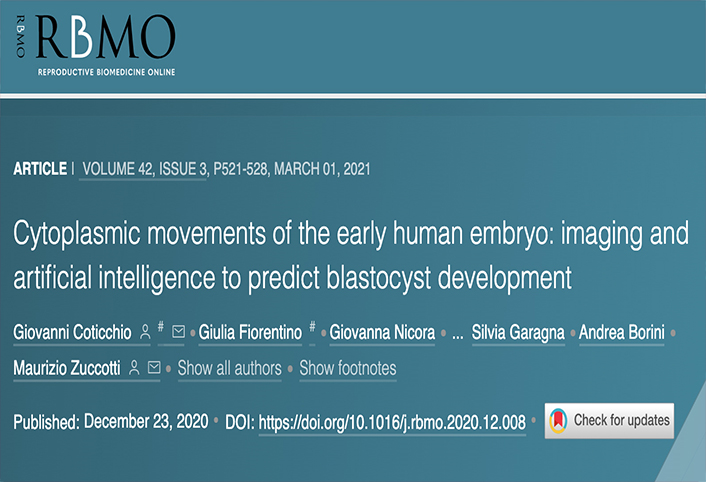
Cytoplasmic movements of the early human embryo: imaging and artificial intelligence to predict blastocyst development
Giovanni Coticchio, Giulia Fiorentino, Giovanna Nicora, Raffaella Sciajno, Federica Cavalera, Riccardo Bellazzi, Silvia Garagna, Andrea Borini, Maurizio Zuccotti
RBMO VOLUME 42, ISSUE 3, P521-528, MARCH 01, 2021 Published: December 23, 2020 DOI:https://doi.org/10.1016/j.rbmo.2020.12.008
Abstract
Research question: Can artificial intelligence and advanced image analysis extract and harness novel information derived from cytoplasmic movements of the early human embryo to predict development to blastocyst?
Design: In a proof-of-principle study, 230 human preimplantation embryos were retrospectively assessed using an artificial neural network. After intracytoplasmic sperm injection, embryos underwent time-lapse monitoring for 44 h. For comparison, standard embryo assessment of each embryo by a single embryologist was carried out to predict development to blastocyst stage based on a single picture frame taken at 42 h of development. In the experimental approach, in embryos that developed to blastocyst or destined to arrest, cytoplasm movement velocity was recorded by time-lapse monitoring during the first 44 h of culture and analysed with a Particle Image Velocimetry algorithm to extract quantitative information. Three main artificial intelligence approaches, the k-Nearest Neighbour, the Long-Short Term Memory Neural Network and the hybrid ensemble classifier were used to classify the embryos.
Results: Blind operator assessment classified each embryo in terms of ability to develop to blastocyst, with 75.4% accuracy, 76.5% sensitivity, 74.3% specificity, 74.3% precision and 75.4% F1 score. Integration of results from artificial intelligence models with the blind operator classification, resulted in 82.6% accuracy, 79.4% sensitivity, 85.7% specificity, 84.4% precision and 81.8% F1 score.
Conclusions: The present study suggests the possibility of predicting human blastocyst development at early cleavage stages by detection of cytoplasm movement velocity and artificial intelligence analysis. This indicates the importance of the dynamics of the cytoplasm as a novel and valuable source of data to assess embryo viability.
